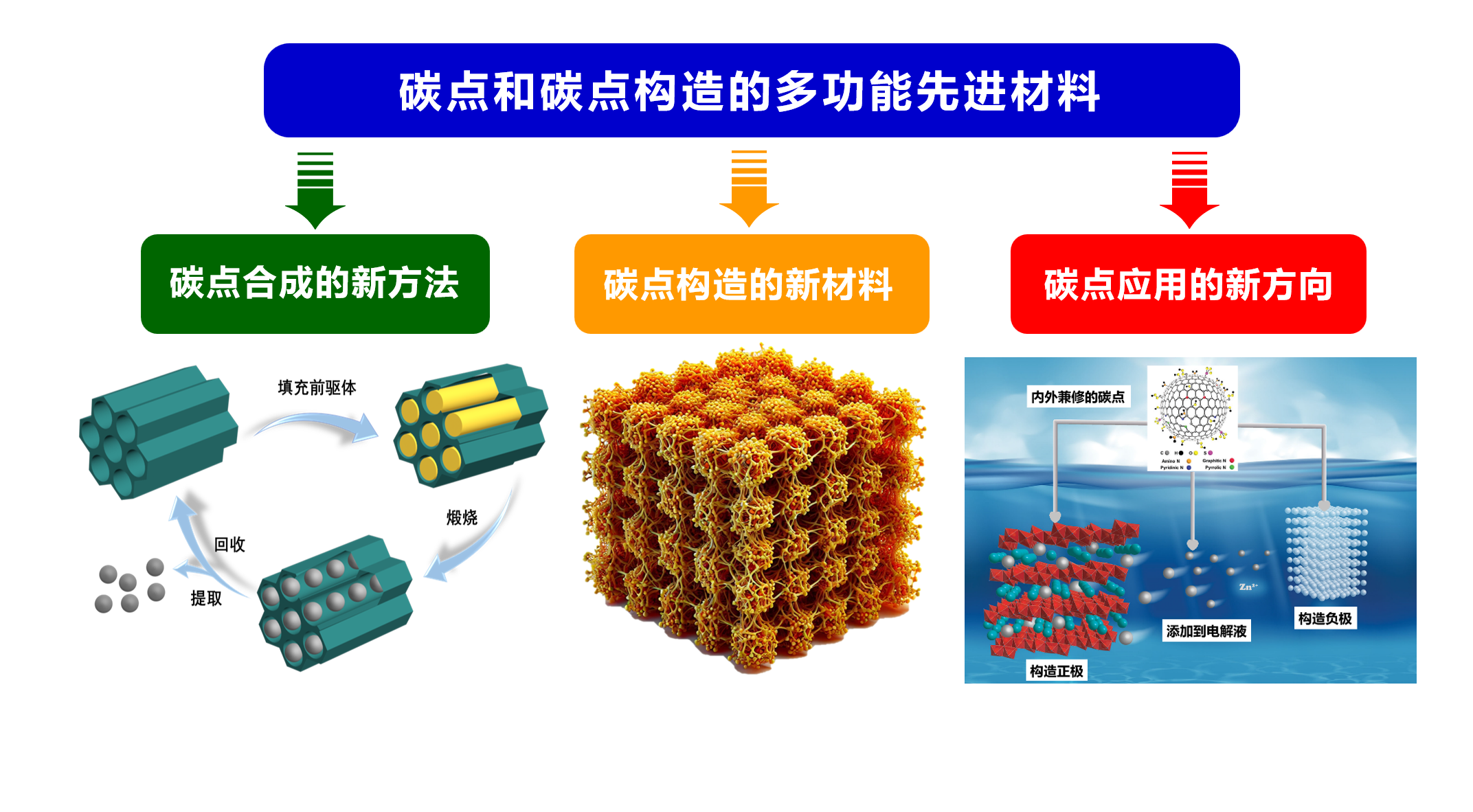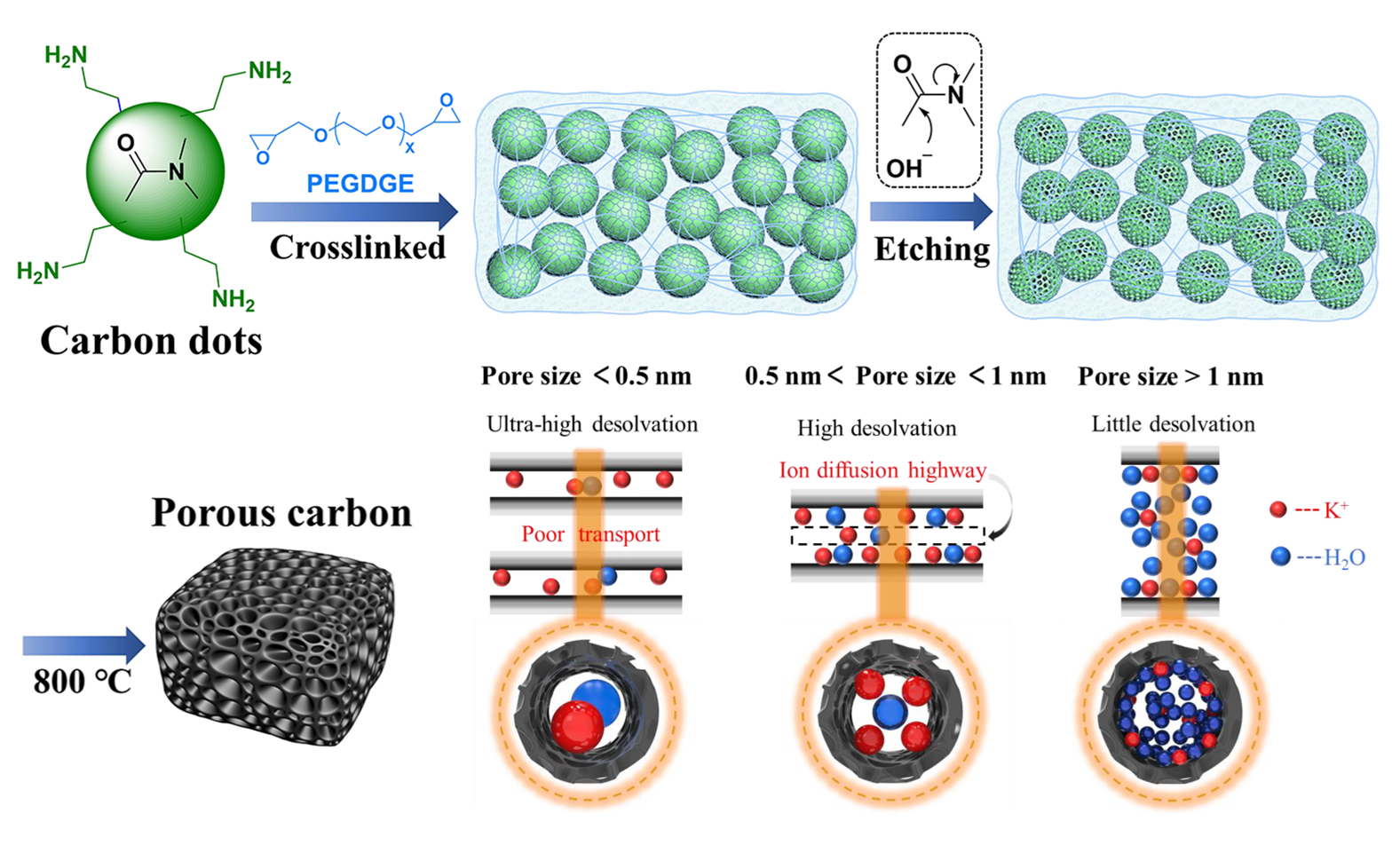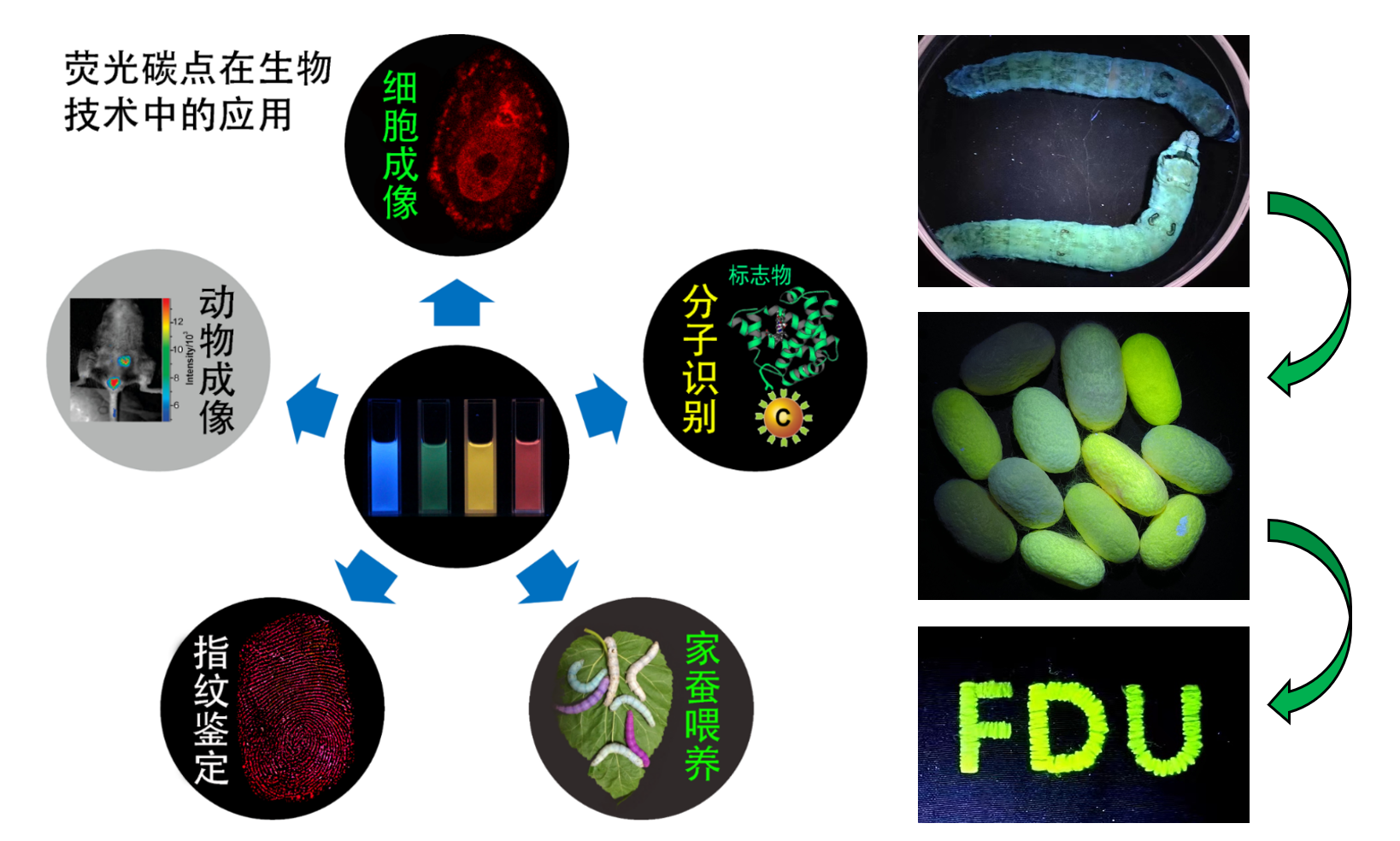Research
The research area of our group is focused on the synthesis and application of functional nanomaterials,currently focusing on carbon dots(CDs). We use sol-gel method, hydrothermal and solvothermal syntheses, high temperature calcination, ultrasonication, microwave digestion, etc., to prepare various nanohybrid materials, and apply them to electrochemical energy storage, fluorescence analysis, biotechnology, and drug-carrying release.

Green Synthesis and Isolation and Purification of CDs |
New Materials Constructed from CDs |
|
Synthesize carbon dots with uniform particle size, good dispersion, rich function and adjustable structure by sol-gel method, hydrothermal-solvent thermal method, high-temperature calcination method, ultrasonic chemical method, microwave disintegration method, solid-phase synthesis method, etc., and develop high-efficient and quick separation and purification technology to realize the large quantity and green manufacture of high-quality, high-purity and high-performance carbon dots.
|
These include self-assembly of carbon dots, composite of carbon dots with other materials, and use of carbon dots as templating agents for pore creation. We developed carbon dots as a new type of self-templating agent as an effective means to precisely create narrowly distributed sub-nanopores in porous carbon. In addition, we have developed carbon dots that can realize multifunctional functions such as antimicrobial and antioxidant properties through various mechanisms, and further composite the prepared carbon dots with polymer materials. | |
 |
 |
|
Fluorescent Applications of CDs |
Electrochemical Energy Storage Applications of CDs |
|
With high biocompatibility and stable fluorescent properties, fluorescent carbon dots have become an ideal material for food supplementation and modification by silkworms. The modification means include additive feeding method and post-processing modification method: the former directly introduces carbon dots into mulberry leaves or feedstuffs, and obtains naturally functionalized modified fibers through cocooning of silkworms; the latter combines industrial degummed silk with carbon dots through soaking and dyeing, and endows the silk with fluorescence or new functions. |
For aqueous zinc ion batteries, performance optimization is achieved by designing carbon dots with different structures. For the positive electrode, the carbon dots can modify existing cathode materials or be used directly as high-performance zinc storage materials; for the negative electrode, the carbon dots are used as electrolyte additives or protective layers to improve the solvation structure of zinc ions and the electrode/electrolyte interface, and to inhibit zinc negative electrode dendrite growth and side reactions. |
|
 |
 |
